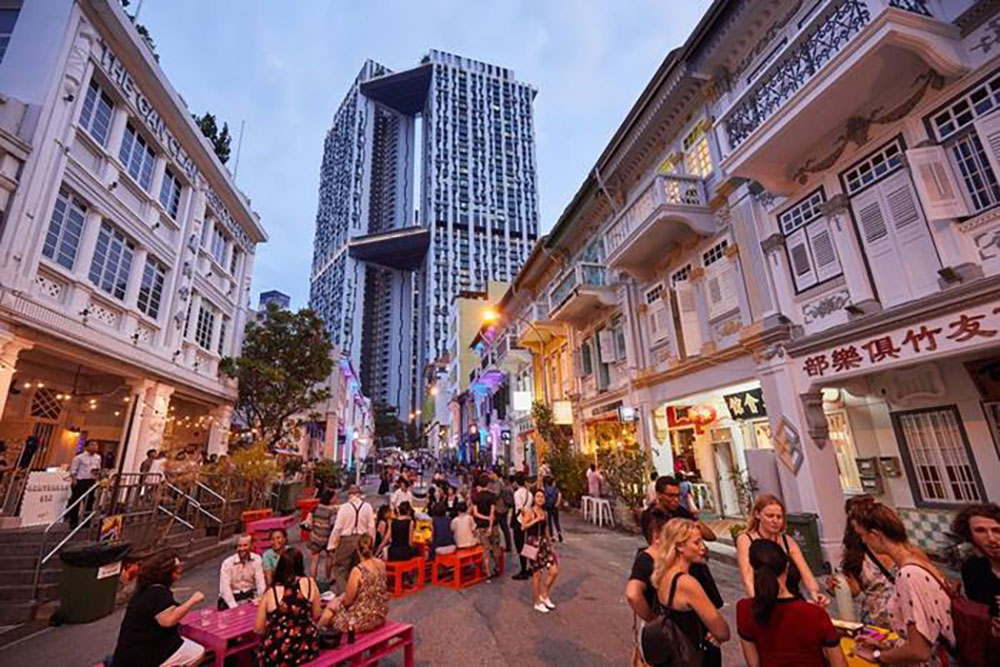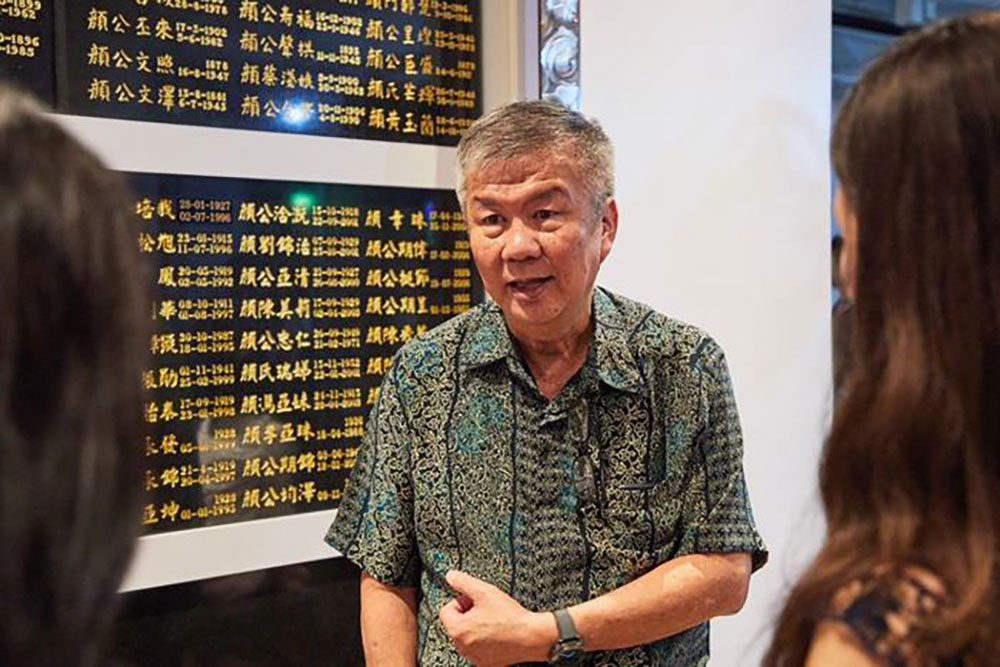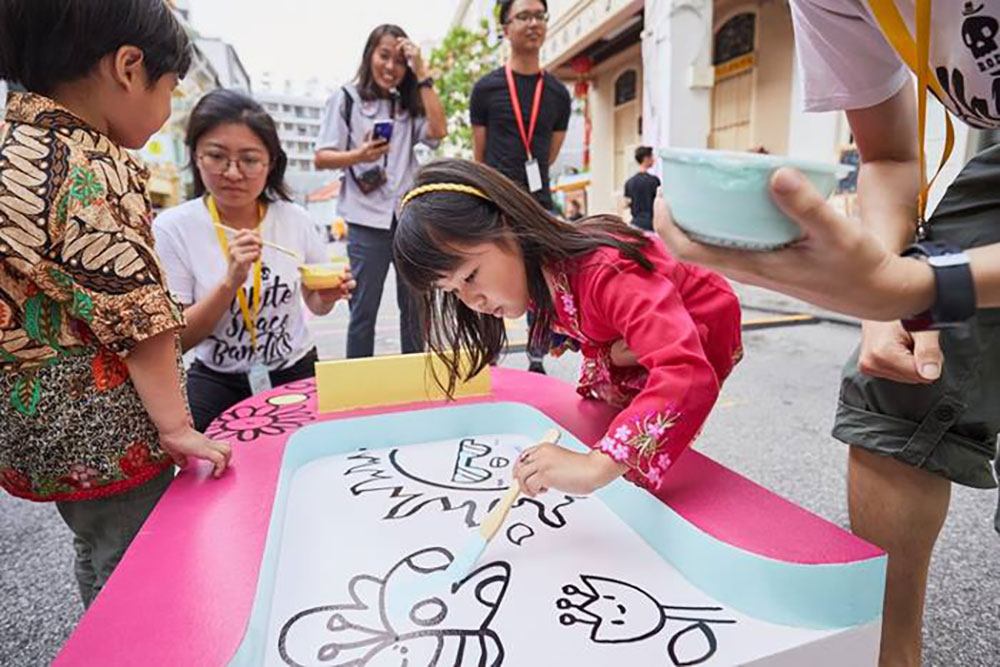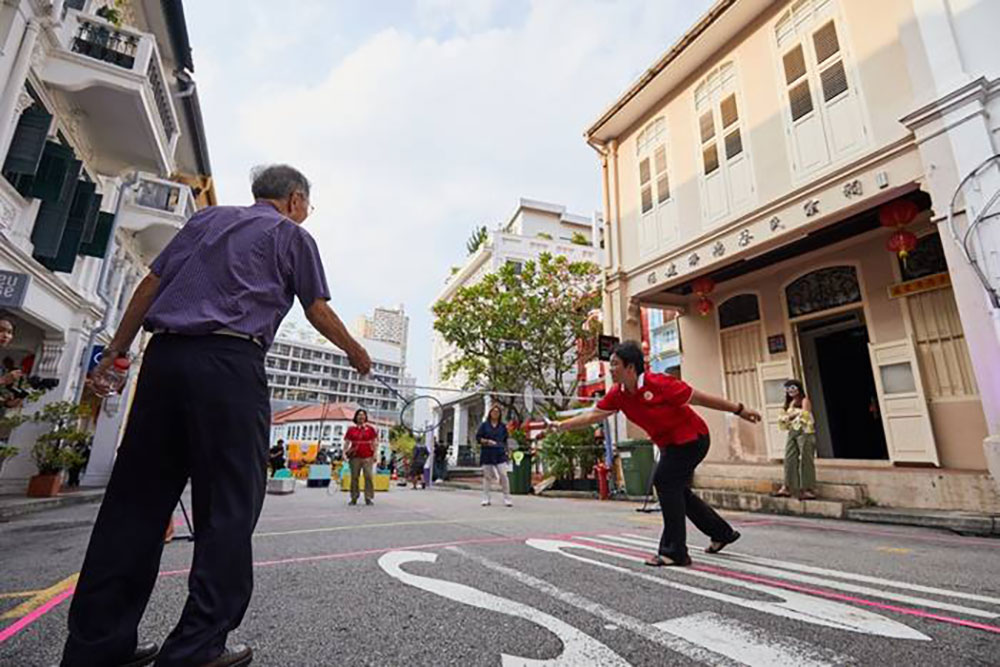Lessons learnt from knocking on clan doors for a design dialogue
What happens when a young creative agency decides to hold a weekend of creative festivities along a street populated by traditional clan houses? Pamela Ho finds out from OuterEdit, the organiser of Street of Clans, a programme of Singapore Design Week 2019.

In the recently concluded Street of Clans, four clan houses opened their doors to the public, and even collaborated with Singapore-based creatives to tell their clan stories from new perspectives.
“This is not the first time we’ve been invited to open our clan doors to the public. Previously, we did not participate. But OuterEdit is our tenant, so we thought let’s give these young people a chance,” says 70-year-old Peter Koh, Secretary-General of the Koh Clan. The Koh Clan was one of four that participated in the creative festival held along Bukit Pasoh Road.
OuterEdit, the outfit behind the festival, had been renting office space on the third storey of Koh Clan’s building when they received an unexpected invitation to the clan’s 70th anniversary celebration dinner in December 2018.
“That celebration gave us an insight into what they cherish and how they celebrate as a big family,” says Ryan Tan, OuterEdit’s founder and managing director. “The atmosphere was very jovial, very warm. Other clans were present too, and people were talking with one other across tables.”

Kinship and unity were values they experienced first-hand. In fact, in subsequent conversations with other clans along Bukit Pasoh – namely, Tung On Wui Kun, Gan Clan and Chin Kang Huay Kuan – they discovered that these values were a common thread across all of them. Hence, the festival’s theme of kinship and unity, which were depicted on collaterals, such as posters and pins, in the form of the kin “ship”. Even the street furniture created for the festival were in the form of boats.
Creative detours ahead
The vision for this home-grown creative festival was to use design installations as a visual medium to tell the clan stories. But getting the various clans to buy into the idea had its challenges – one being language barriers. But OuterEdit was eager to work with an unexpected client because “it opens doors, it starts conversations, and it forces us to see things from a different perspective”.
The importance of communication quickly became apparent. “Translating a simple design process in our minds to someone who has never encountered design is a challenge. We take it for granted because we do this day in, day out,” shares Tan. It was something they had to fix because “it cannot be design for designers. Without the wider community, there’s no need for design to exist.”

Translating a simple design process in our minds to someone who has never encountered design is a challenge. We take it for granted because we do this day in, day out.
Because creativity was on the table, the clans were – understandably – very particular about how they were represented. This entailed many rounds of discussion with the individual clans, which led to many adjustments, but this is all part of the design process and mindset, says Tan. “We have to put ourselves in the user’s shoes and consider how they will interact with the programmes.”
Keeping it simple for the consumer was also a consideration. For instance, the team had initially intended to frame the featured businesses along Bukit Pasoh as “modern clans” but later felt it might be too confusing for people.
“So we simplified it – to ‘neighbourhood discoveries’,” reveals Tan. “But at the core, it’s still about unity and kinship, and bringing designers and businesses together.”
Where creatives connect
Creatives from the local design industry were invited to co-create works that capture the values of the various clans. The emphasis was on inspiring a collaborative spirt. In the past, clans formed along the lines of locality, surnames or trade. Could modern tribes, formed along creative lines, embrace these age-old values and translate them into actionable results?

along Bukit Pasoh Road.
To celebrate the value of “Embracing Our Culture” at Tung On Wui Kun, Binary Style’s Santhi and Sari Tunas (twin sisters and architects/scarf designers) collaborated with contemporary furniture label, SCENE SHANG. “They are known for designing furniture with an Asian touch but very contemporary, so we’re similar in that we present heritage in a fresh way,” says Santhi.
Their co-created installation – For the Love of Opera – sought to bring the clan’s Cantonese opera legacy to life. Binary Style’s aesthetically modern scarves, which highlight the four major Chinese opera roles, hung like colourful flags from the clan’s ceiling. For the head-dress centrepiece, iconic Singapore images were cut out from defective scarves and pieced together to create a wayang-inspired showpiece. One of SCENE SHANG’s wooden benches, similar to those used at outdoor opera performances, also featured fabric motifs created by Binary Style.
As for art director Pixie Tan, collaboration is very much a part of her practice. When invited to capture the value of “Unity” for the Koh Clan, she gathered a team of multidisciplinary creatives – Ng Fong Yee, Mark Lim, Lim Pin Han and Sebastian Wong (collectively known as To the Power Of) – to work together on Let the Good Times Roll, an interactive installation (inspired by the Rube Goldberg machine and marble run) which fused set design, sound design, and DIY technology.
What the team wanted to bring across with the installation was the Chinese saying, 团结就是力量, which translated means “unity is strength”. “When you release the ball, you can just watch what happens as a spectator, but you don’t get to see the finale until two other people join you,” explains Pixie. “When all three balls come together, they activate both the lights and music track.”OuterEdit is heartened by the results. “We just wanted to create a platform where people could connect in more meaningful ways. Besides wanting to engage a wider audience and bridge the gap between old and new, we wanted this for the local creatives – to find themselves and each other.”
Becoming more open to possibilities
By bringing together two very different worlds, it’s almost inevitable that something unexpected happens. For the clans, their biggest concerns have been succession planning and dwindling interest from the younger generation. They had no inkling of how design related to any of this.

Koh, a tea merchant by trade, admits that the installation was too abstract for him to immediately understand. “But it is, well, symbolic of the closeness of the clan and everybody was happy with it.”
As for Wong Kum Soon, Secretary of Tung On Wui Kun, he is pleased that the colourful scarves enticed people to step into the clan. “I’m not a creative guy, but I think they’re very beautifully designed. I will probably write in to see if we can retain them after the event.”
The 43-year-old financial advisor, who joined the clan about five years ago after his father stepped down as a director, believes that design can play an important role in revitalising the almost 150-year-old clan. “If we can transform our space – like invite young artists to draw on the walls – the younger members’ view of us will change. And from a business perspective, maybe we can generate revenue from tourism to sustain our cultural activities. What we need is a mindset change.”
Now that the door on design dialogue has opened, OuterEdit says it’s keen to keep the momentum going. “The clans seem keen to embark on new projects and collaborations – between themselves and with us – to continue making their legacy, history and stories resonate with new audiences and generations,” says Tan, of OuterEdit.




